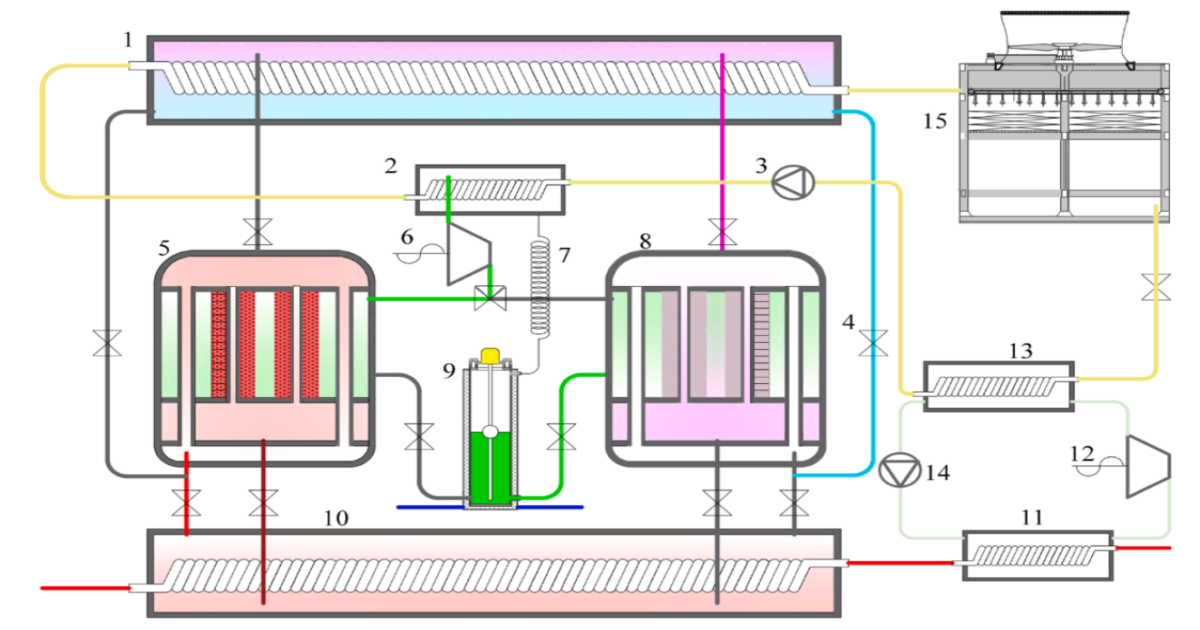Waste Heat Recovery and Utilization
A special issue of Sustainability (ISSN 2071-1050). This special issue belongs to the section "Waste and Recycling".
Deadline for manuscript submissions: closed (31 August 2023) | Viewed by 3994

Special Issue Editor
Interests: waste energy; renewable energy; energy storage; thermal heat-driven cooling; heating; desalination; power generation
Special Issues, Collections and Topics in MDPI journals
Special Issue Information
Dear Colleagues,
Waste heat utilization is critical for the efficient usage of energy, including waste heat-driven heating, cooling, power generation, dehumidification, desalination technologies, etc. Sorption technology is one of the most promising methods to utilize low-grade energy. Recently, the volume of research on sorption systems has been growing rapidly, including new materials, advanced thermodynamic cycles, heat, and mass transfer enhancement, control strategy optimization, new prototypes, application cases, etc. An academic platform to exhibit the latest development in sorption cooling, desalination, energy storage, and heating is urgently needed.
The main limitations of sorption systems are the low energy efficiency and the large system size. This research topic will aim at problems of low adsorption capacity of adsorbents, the poor performance of heat and mass transfer, and low system performance problems. The recent advances include advanced adsorbents. For example, more MOFs (metal-organic frameworks) and compound adsorbents have been investigated. As for the advanced cycle, some combined cycles of adsorption cooling, heating, and power, driven by low-grade thermal energy are studied. The generator can be driven by the high-temperature and high-pressure adsorbate vapor because adsorption capacity, energy storage density, and the adsorption potential energy conversion capacity of the compound MOF adsorbents are 2–5-times higher than that of traditional physical adsorbents. Meanwhile, the desorbed vapor can be condensed for desalination. Hence, the combined adsorption cooling, heating, desalination, and power cycle can be realized; the sorption heat transformer cycle can improve the grade of heat through grade-lifting technologies. Topics on the advances in these energy systems with better performance, adaptability, and reliability are interesting, as well as efficient integration of these energy systems. We also welcome novel applications, such as water harvesting, deep dehumidification, carbon capture, and utilization.
In this Special Issue, original research articles and reviews are welcome. Research areas may include (but are not limited to) the following:
The specific themes may include:
(1) Novel adsorbents: such as the MOFs, compound adsorbents, heat and mass transfer improvement of adsorbents, etc.
(2) New cycles: such as the new cycle of sorption cooling, heating, energy storage, desalination, power generation, etc.
(3) New applications: such as sorption technologies for carbon capture, hydrogen storage, and production, water harvester, cooling, heat pump, etc.
I look forward to receiving your contributions.
Dr. Zisheng Lu
Guest Editor
Manuscript Submission Information
Manuscripts should be submitted online at www.mdpi.com by registering and logging in to this website. Once you are registered, click here to go to the submission form. Manuscripts can be submitted until the deadline. All submissions that pass pre-check are peer-reviewed. Accepted papers will be published continuously in the journal (as soon as accepted) and will be listed together on the special issue website. Research articles, review articles as well as short communications are invited. For planned papers, a title and short abstract (about 100 words) can be sent to the Editorial Office for announcement on this website.
Submitted manuscripts should not have been published previously, nor be under consideration for publication elsewhere (except conference proceedings papers). All manuscripts are thoroughly refereed through a single-blind peer-review process. A guide for authors and other relevant information for submission of manuscripts is available on the Instructions for Authors page. Sustainability is an international peer-reviewed open access semimonthly journal published by MDPI.
Please visit the Instructions for Authors page before submitting a manuscript. The Article Processing Charge (APC) for publication in this open access journal is 2400 CHF (Swiss Francs). Submitted papers should be well formatted and use good English. Authors may use MDPI's English editing service prior to publication or during author revisions.
Keywords
- sorption
- cooling
- heating
- energy storage
- power generation
- dehumidification





